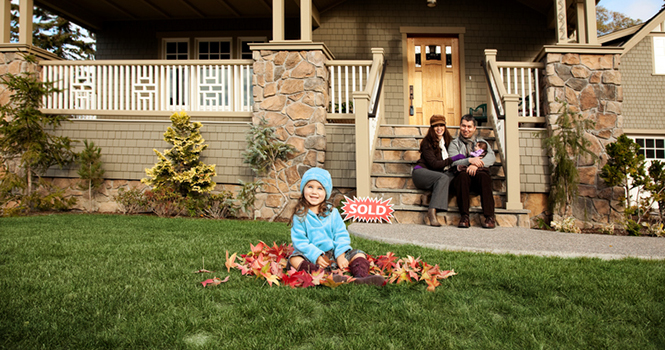Existing-home sales increased 0.7 percent to 5.61 million in November, reports the National Association of REALTORS® (NAR), up from 5.57 million in October—reversing the typical trend toward a slowdown at this time of year. The November numbers, up 15.4 percent from last November, mark the highest sales pace since February 2007. The upward pull, according to the report, was driven primarily by activity in the Northeast, which grew 8.0 percent to 810,000.
“The healthiest job market since the Great Recession and the anticipation of some buyers to close on a home before mortgage rates accurately rose from their historically low level have combined to drive sales higher in recent months,” says Lawrence Yun, NAR chief economist. “Furthermore, it’s no coincidence that home shoppers in the Northeast—where price growth has been tame all year—had the most success last month.”
“With the holidays around the corner and weather getting frosty in much of the country, November is typically the slowest month of the fall,” says Jonathan Smoke, realtor.com® chief economist, “but this year it was abnormally strong. Last month, we saw the highest level of sales for November since 2006, and there was more buyer and seller traffic than there was in October.”
Last month, the median existing-home price was $234,900, up 6.8 percent from last year ($220,000). Total housing inventory, meanwhile, dropped 8.0 percent to 1.85 million—now 9.3 percent lower than a year ago (2.04 million). Unsold inventory is at a 4.0-month supply at the current sales pace, which is down from 4.3 months in October.
“Consumers should be aware that the overall supply of homes for sale remains very low, and pent-up demand is leading to large jumps in price acceleration,” says Smoke. “The number of homes for sale is down 11 percent compared to a year ago, and median prices are up 7 percent. On top of that, December is tracking to an even bigger decline.”
“Existing housing supply at the beginning of the year was inadequate and is now even worse heading into 2017,” says Yun. “Rental units are also seeing this shortage. As a result, both home prices and rents continue to far outstrip incomes in much of the country.”
According to Freddie Mac, the average commitment rate for a 30-year, conventional, fixed-rate mortgage leaped to 3.77 percent in November from 3.47 percent in October (highest rate since January at 3.87 percent). The average commitment rate for all of 2015 was 3.85 percent.
“Buyers planning to purchase in 2017 will contend with even more limited supply while they also race against the prospect of mortgage rates reaching levels we have not seen since 2010,” Smoke says. “The good news is that rates are rising because of continued economic growth, and many households should see income gains in 2017. However, those gains are not likely to be higher than the combined effect of higher prices and higher mortgage rates.”
“First-time buyers in higher-priced cities will be most affected by rising prices and mortgage rates next year and will likely have to stretch their budget or make compromises on home size, price or location,” Yun says.
First-time homebuyers were 32 percent of sales in November, which is down from 33 percent in October but up from 30 percent a year ago.
Properties typically stayed on the market for 43 days in November, up from 41 days in October but down considerably from a year ago (54 days). Short sales were on the market the longest at a median of 110 days, while foreclosures sold in 55 days and non-distressed homes took 41 days. Forty-two percent of homes sold were on the market for less than a month.
Inventory data from realtor.com reveal that the metropolitan statistical areas where listings stayed on the market the shortest amount of time in November were Billings, Mont., 23 days; San Jose-Sunnyvale-Santa Clara, Calif., 41 days; San Francisco-Oakland-Hayward, Calif., 42 days; Nashville-Davidson-Murfreesboro-Franklin, Tenn., 45 days; and Provo-Orem, Utah, 46 days.
All-cash sales were 21 percent of transactions in November, down from 22 percent in October and 27 percent a year ago, according to the report. Individual investors, who account for many cash sales, purchased 12 percent of homes, down from 13 percent in October and 16 percent a year ago. Fifty-eight percent of investors paid in cash in November, which matches the lowest share since August 2009.
Distressed sales, in addition—foreclosures and short sales—rose to 6 percent in November, up from 5 percent in October but down from 9 percent a year ago. Four percent of November sales were foreclosures and 2 percent were short sales. Foreclosures sold for an average discount of 17 percent below market value in November (18 percent in October), while short sales were discounted 16 percent.
Single-family home sales declined 0.4 percent to 4.95 million in November from 4.97 million in October, but are still 16.2 percent above the 4.26 million pace a year ago. The median existing single-family home price was $236,500 in November, up 6.8 percent from November 2015.
Existing condominium and co-op sales jumped 10.0 percent to 660,000 units in November, and are now 10.0 percent above a year ago. The median existing condo price was $222,600 in November, which is 5.8 percent above a year ago.
In the Midwest, existing-home sales decreased 2.2 percent to an annual rate of 1.33 million in November, but are still 18.8 percent above a year ago. The median price in the Midwest was $180,300, up 6.5 percent from a year ago.
Existing-home sales in the South in November rose 1.4 percent to an annual rate of 2.22 million, and are now 11.6 percent above November 2015. The median price in the South was $206,900, up 9.2 percent from a year ago.
Existing-home sales in the West declined 1.6 percent to an annual rate of 1.25 million in November, but are still 19.0 percent higher than a year ago. The median price in the West was $345,400, up 8.5 percent from November 2015.
“It’s never too early to begin viewing listings online and in person with a REALTOR® to identify what’s available within the budget and where,” says NAR President William E. Brown of the report. “There are fewer available homes during the winter months, but also fewer buyers. With mortgage rates and prices expected to increase as the year goes on, the first few months of 2017 could be an opportune time to close on a home.”
For more information, please visit www.nar.realtor.
For the latest real estate news and trends, bookmark RISMedia.com.











